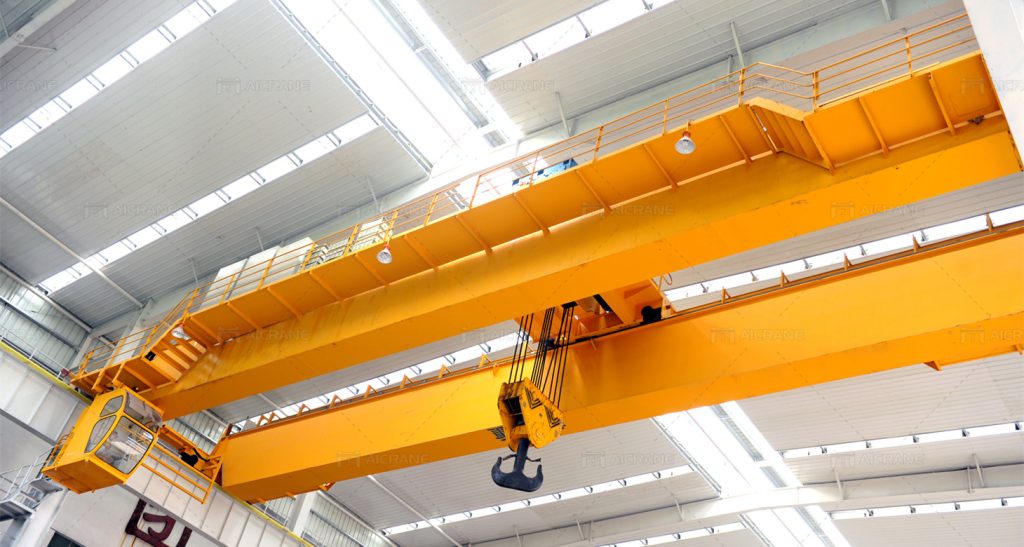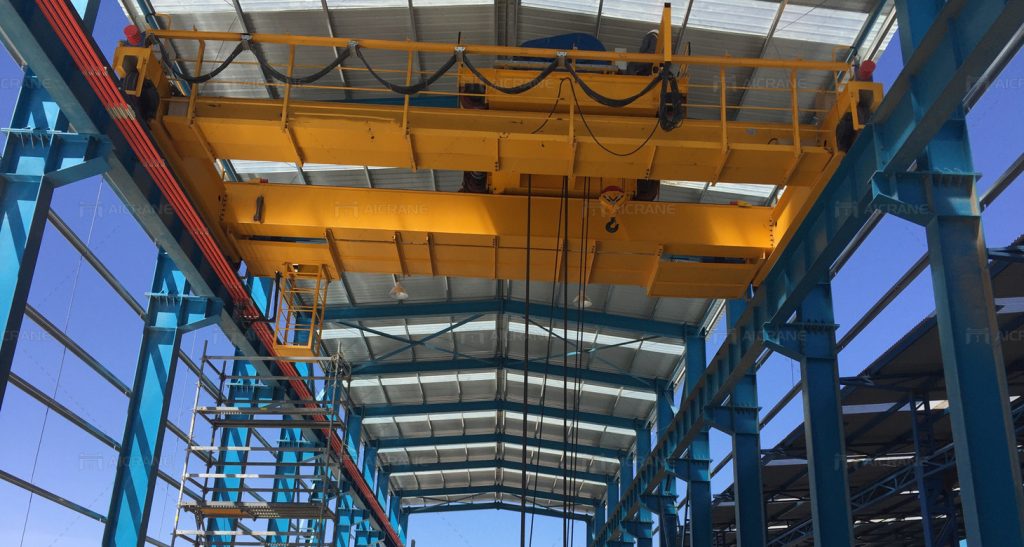Maintaining a 50 ton overhead crane is crucial for ensuring its longevity, optimal performance, and, most importantly, the safety of operations. Overhead cranes, especially those with a substantial lifting capacity like the 50 ton variants, are vital in heavy-duty industrial settings for lifting and transporting heavy loads. Here are five essential tips for maintaining a 50 ton overhead crane:

Regular Inspection and Lubrication
Regular inspections are the cornerstone of overhead crane maintenance. For a 50 ton crane, thorough checks should be conducted on a scheduled basis. This includes inspecting critical components such as the hoist, trolley, runway, and electrical systems. Look for signs of wear and tear, corrosion, loose bolts, or damaged parts. Pay special attention to the load-bearing components like the hooks, ropes, and chains.
Lubrication is equally important. Properly lubricated components reduce friction, prevent wear, and contribute to the smooth operation of the crane. Develop a lubrication schedule based on the manufacturer recommendations, ensuring that all moving parts receive adequate lubrication. This proactive approach helps prevent premature component failure and extends the overall lifespan of the crane.
Electrical System Maintenance
The electrical system is a critical aspect of any overhead crane, and a 50 ton crane is no exception. Regularly inspect the electrical components, including wiring, connectors, and controls. Look for signs of overheating, loose connections, or damaged insulation. Any issues with the electrical system can lead to operational failures or, in worst cases, pose safety hazards.
Calibrate the control systems to ensure precise and accurate movements. Consider implementing a preventive maintenance program for electrical components, including routine testing and inspections. Address any identified issues promptly to avoid disruptions in crane operations.
Structural Inspection and Alignment
The structural integrity of a 50 ton double girder overhead crane is paramount. Regularly inspect the crane structure, including the bridge, trolley, and runway beams. Look for any signs of misalignment, cracks, or deformities. Structural issues can compromise the crane’s lifting capacity and pose significant safety risks.
Alignment checks are crucial to ensure that the crane moves along its designated path smoothly. Misaligned components can lead to uneven stress distribution and accelerated wear on crucial parts. If misalignment is detected, it should be corrected promptly to prevent further damage and maintain the crane’s structural stability.

Load Testing and Capacity Checks
Load testing is a critical aspect of maintaining the safety and performance of a 50 ton overhead crane. Periodically conduct load tests to verify that the crane can lift its maximum rated capacity safely. Load testing helps identify potential issues with the hoist, brakes, and structural components.
Additionally, regularly check and recalibrate the load capacity indicators. This ensures that operators receive accurate information about the load being lifted. Overloading a crane can lead to catastrophic failures, so it’s essential to have reliable load monitoring systems in place.
Operator Training and Safety Protocols
Well-trained operators play a vital role in the safe and efficient operation of a 50 ton overhead crane. Regularly provide training sessions for crane operators to update their knowledge of safety protocols, operational procedures, and emergency response plans. Emphasize the importance of adhering to load capacity limits and avoiding unsafe practices.
Implement a reporting system that encourages operators to report any issues or abnormalities they observe during crane operation. Early detection of potential problems allows for prompt intervention and maintenance. Additionally, establish a culture of safety within the workplace, promoting a collective responsibility for crane safety.
Maintaining a 50 ton overhead crane requires a proactive and comprehensive approach. Regular inspections, lubrication, attention to the electrical system, structural checks, load testing, and operator training are all essential components of an effective maintenance strategy. By investing time and resources in the proper care of the crane, operators can ensure its reliability, longevity, and, most importantly, the safety of everyone involved in its operation.
A well-maintained 50 ton overhead crane not only reduces the risk of accidents and unplanned downtime but also contributes to the overall efficiency of heavy-duty industrial operations. Regular maintenance is an investment in the longevity and performance of the crane, providing a solid foundation for safe and productive material handling in diverse industrial settings.